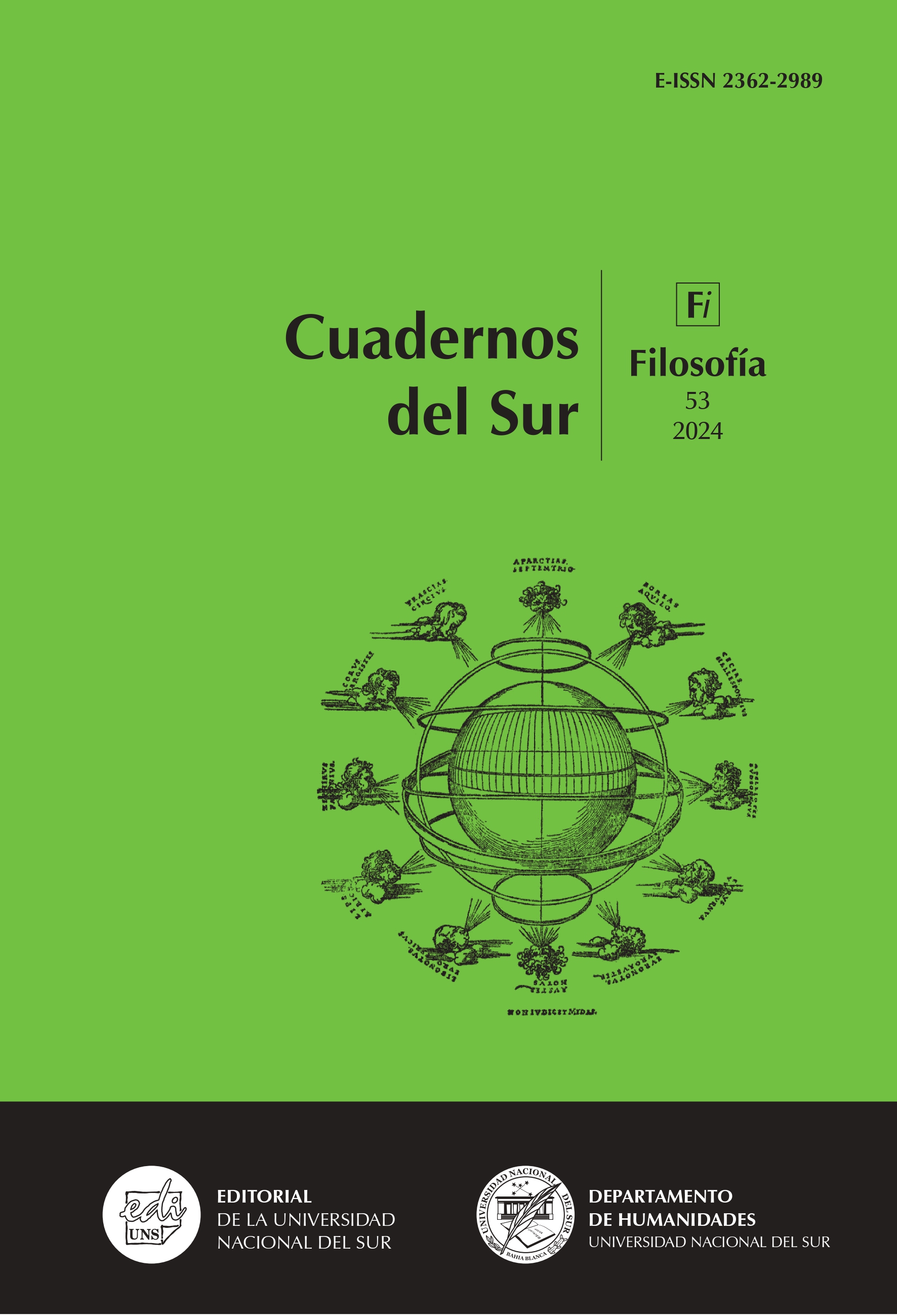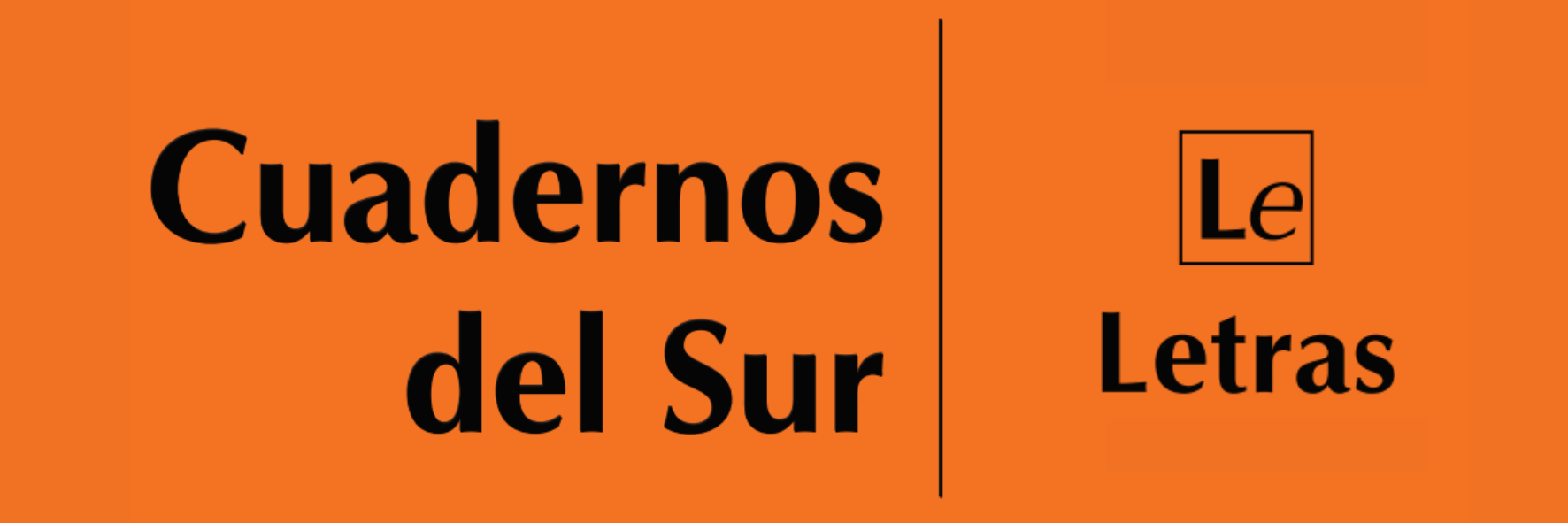Witches between Tough and Weak Guys: Film Noir and the Crisis of the Action-Image
DOI:
https://doi.org/10.52292/csf5320244763Keywords:
film noir, crisis of the action-image, patriarchal organization of capitalismAbstract
Silvia Federici (2004) has developed the thesis that the witch-hunt was the main action carried out to establish the patriarchal organization of capitalism with a new gender division of labour. The nuclear family was then a central device for the success of this productive model and, at the same time, for the double mystification of women’s work (“They say it is love. We say it is unwaged work”) and of the subjection of the wage worker in industrial capitalism under the form of formal freedom. Some of the most recurrent characters of film noir are the femme fatale, the homosocial and misogynistic detective and the ordinary man who wants to escape the gray everyday life. I will try to show that the coexistence of these characters, together with “a certain perspective of the world, a pessimistic, cynical or nihilistic perspective” (Grob, 2008: 9), not only make up a new sensitivity, but are also a testimony of the values crisis of Modernity and faith in progress. This new noire modality presents a world of condemnation and dreamers that is consistent with the crisis or exhaustion of the action-image (Deleuze, 1984; 1987).
Downloads
References
Antalff, Alexander (director) (1917), Lulu [película], Alemania, Projektions - AG Union.
Carné, Marcel (director) (1938a), Le Quai des brumes [película], Francia, Franco London Films.
----- (director) (1938b), Hôtel du Nord [película], Francia, Joseph Lucachevitch - Onésime Grinkrug - Jean Levy-Strauss - Franco London Films.
Dassin, Jules (director) (1948), The Naked City [película], Estados Unidos, Mark Hellinger Productions y Universal International.
Dmytryk, Edward (director) (1944), Murder, My Sweet [película], Estados Unidos, RKO Radio Pictures.
Fregonese, Hugo (director) (1949), Apenas un delincuente [película], Argentina, Interamericana Films, Phoebus International.
Galeen, Henrik (director) (1930), Alraune [película], Alemania, Ama-Film GmbH.
Hawks, Howard (director) (1946), The Big Sleep [película], Estados Unidos, Warner Bros.
Huston, John (director) (1941), The Maltese Falcon [película], Estados Unidos, Warner Bros.
Jessner, Leopold (director) (1923), Erdgeist [película], Alemania, Leopold-Jessner-Film - Richard-Oswald-Production.
Kazan, Elia (director) (1950), Panic in the Streets [película], Estados Unidos, 20th Century Fox.
Lang, Fritz (director) (1944), The Woman in the Window [película], Estados Unidos, International Pictures - RKO Radio Pictures.
Leva, Gary (director) (2006), Film noir. Bringing darkness to the light [documental], Estados Unidos, Leva Film Works.
Lewis, Joseph (director) (1950), Gun Crazy [película], Estados Unidos, United Artists.
Pabst, Georg Wilhelm (director) (1929), Die Büchse der Pandora [película], Alemania, Nero Film.
Preminger, Otto (director) (1953), Angel Face [película], Estados Unidos, RKO Radio Pictures - Howard Hughes.
Ray, Nicholas (director) (1948), They Live by Night [película], Estados Unidos, RKO Radio Pictures.
Tourneur, Jacques (director) (1947), Out of the Past [película], Estados Unidos, RKO Radio Pictures.
Ulmer, Edgar G. (director) (1945), Detour [película], Estados Unidos, PRC Pictures.
Vidor, Charles (director) (1946), Gilda [película], Estados Unidos, Columbia Pictures.
Visconti, Luchino (director) (1943), Ossessione [película], Italia, Indusrie Cinematografiche Italiane.
Von Sternberg, Josef (director) (1930), Der Blaue Engel [película], Alemania, U.F.A.
Wilder, Billy (director) (1944), Double Indemnity [película], Estados Unidos, Paramount Pictures.
Adorno, Theodor (1962), Prismas, Barcelona, Ariel, [traducción de Manuel Sacristan].
Altman, Rick (2000), Los géneros cinematográficos, Barcelona-Buenos Aires-México, Paidós, [traducción de Carles Roche Suárez].
Bazin, André (2004), “El western o el cine americano por excelencia”, en ¿Qué es el cine?, Madrid, Ediciones Rialp, pp. 162-170, [traducción de José Luis López].
Belton, John (2012), American Cinema / American Culture, Nueva York, Mcgraw-Hill.
Benjamin, Walter (1977), “Der Erzahler. Betrachtungen zum Werk Nikolai Lesskows”, en Gesammelte Schriften, tomo II, vol. 2, Frankfurt am Main, Suhrkamp, pp. 438-465.
Borde, Raymond y Chaumeton, Étienne (1958), Panorama del Cine Negro, Buenos Aires, Losange, [traducción de Carmen Bonasso].
Bordwell, David (1996), “La narración clásica”, en La narración en el cine de ficción, Barcelona-Buenos Aires-México, Paidós, pp. 156-204, [traducción de Pilar Vázquez Mota].
Chartier, Jean-Pierre (1946), “Les Américains aussi font des films noirs”, La Revue du cinéma, n° 2, pp. 67-70.
Chesterton, Gilbert Keith (1992), “The Honour of Israel Gow”, en Father Brown. Selected Stories, Hertfordshire, Wordsworth Editions Limited, pp. 95-113.
Deleuze, Gilles (1984), La imagen-movimiento. Estudios sobre cine 1, Barcelona-Buenos Aires-México, Paidós, [traducción de Irene Agoff].
----- (1987), La imagen-tiempo. Estudios sobre cine 2, Barcelona-Buenos Aires-México, Paidós, [traducción de Irene Agoff].
Ebert, Roger (1995), “A Guide to Film Noir Genre”, [disponible en https://www.rogerebert.com/roger-ebert/a-guide-to-film-noir-genre].
Esquenazi, Jean-Pierre (2018), El film noir: historia y significaciones de un género popular subversivo, Buenos Aires, El cuenco de plata, [traducción de Carlos Schilling].
Federici, Silvia (2004), Caliban and the Witch. Women, The Body and Primitive Accumulation, Nueva York, Autonomedia.
----- (2010), Calibán y la bruja. Mujeres, cuerpo y acumulación originaria, Madrid, Traficantes de Sueños, [traducción de Verónica Hendel y Leopoldo Sebastián Touza].
Grob, Norbert (2008), Filmgenres. Film noir, Stuttgart, Reclam.
Jameson, Fredric (2023), Raymond Chandler. Las detecciones de la totalidad, Buenos Aires, Refucilo, [traducción de Jerónimo Ledesma].
Huyssen, Andreas (2006), Después de la gran división. Modernismo, cultura de masas, posmodernismo, Buenos Aires, Adriana Hidalgo, [traducción de Pablo Gianera].
Naremore, James (2008), More Than Night: Film Noir in its Contexts, Berkeley, University of California Press.
Negroni, María (2021), Film noir, Buenos Aires, La Marca.
Rancière, Jacques (2005), “¿De una imagen a otra? Deleuze y las edades del cine”, en La fábula cinematográfica. Reflexiones sobre la ficción en el cine, Barcelona, Paidós, pp. 129-146, [traducción de Carles Roche].
Schrader, Paul (2004), “Apuntes sobre el film noir”, Revista Latente, nº 2, pp. 123-134, [traducción de Gonzalo M. Pavés y Juan José Cruz Hernández].
Warshow, Robert (2001), “The Gangster as Tragic Hero”, en The Immediate Experience. Movies, Comics, Theatre, and Other Aspects of Popular Culture, Cambridge-Massachusetts-Londres, Harvard University Press, pp. 97-103.
Žižek, Slavoj (1993), “ʻThe Thing That Thinkʼ: The Kantian Background of de Noir Subject”, en Copjec, Joan (ed.), Shades of Noir, Londres-Nueva York, Verso, pp. 199-227.
How to Cite
Issue
Section
License
Copyright (c) 2024 Román Setton

This work is licensed under a Creative Commons Attribution-NonCommercial 4.0 International License.
Aquellos autores/as que tengan publicaciones con esta revista, aceptan los términos siguientes:- Los autores/as conservarán sus derechos de autor y garantizarán a la revista el derecho de primera publicación de su obra, el cuál estará simultáneamente sujeto a la licencia Atribución-No Comercial 4.0 Internacional CC BY-NC 4.0.
- Los autores/as podrán adoptar otros acuerdos de licencia no exclusiva de distribución de la versión de la obra publicada (p. ej.: depositarla en un archivo telemático institucional o publicarla en un volumen monográfico) siempre que se indique la publicación inicial en esta revista.
- Se permite y recomienda a los autores/as difundir su obra a través de Internet (p. ej.: en archivos telemáticos institucionales o en su página web) una vez publicado su trabajo, lo cual puede producir intercambios interesantes y aumentar las citas de la obra publicada. (Véase El efecto del acceso abierto).














